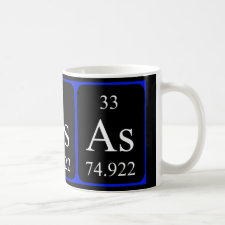
Authors: Mustafai FA, Balouch A, Abdullah, Jalbani N, Bhanger MI, Jagirani MS, Kumar A, Tunio A
Article Title: Microwave-assisted synthesis of imprinted polymer for selective removal of arsenic from drinking water by applying Taguchi statistical method.
Publication date: 2018
Journal: European Polymer Journal
Volume: 109
Page numbers: 133-142.
DOI: 10.1016/j.eurpolymj.2018.09.041
Alternative URL: https://www.sciencedirect.com/science/article/pii/S0014305718308541
Abstract: In the present study, As3+ imprinted polymer as an active detoxification material has been synthesized through microwave assisted preparation method. By inducing the microwave radiation during the polymerization process decreases the reaction time to about 10 folds than conventional method. The imprinted polymer is one of the best possible techniques for the removal of arsenic, and various other contaminants from drinking water. The SEM and FTIR analyses have been conducted to clarify microstructure, surface morphology and size distribution of the synthesized imprinted polymer. The main parameters affecting the pzc, pH, agitation time, shaking speed, concentration, the temperature of adsorbent and percent of sorption, have been examined and optimized by Taguchi design. Taguchi L9 orthogonal array was employed to optimize the important factors versus % sorption values with nine experimental runs at 3 levels. Moreover, to understand the reaction phenomenon Langmuir and Freundlich isotherms, kinetic models and thermodynamics of adsorption process were calculated. The relative selectivity coefficient of imprinted polymer for As3+/Cd2, As3+/Zn2+, As3+/Ni2+ were respectively 45.93, 131.01, 262.63 times greater than for non-imprinted polymer. The limit of detections (LOD) and limit of quantification (LOQ) of the proposed procedure for As3+ ion was found to be 1.0 μg/L and 3.3 μg/L for the As3+ ion respectively, with the relative standard deviation (RSD) of 4%. The excellent adsorption performance along with their low cost and convenient synthesis makes this range of adsorbent highly promising for commercial applications in drinking water purification and water treatment
Template and target information: arsenic ion, AS(III)
Author keywords: imprinting polymer, Micro-scale structures, SEM, FTIR, adsorption, Taguchi method, Arsenic removal, Drinking water



Join the Society for Molecular Imprinting

New items RSS feed
Sign-up for e-mail updates:
Choose between receiving an occasional newsletter or more frequent e-mail alerts.
Click here to go to the sign-up page.
Is your name elemental or peptidic? Enter your name and find out by clicking either of the buttons below!
Other products you may like:
 MIPdatabase
MIPdatabase









